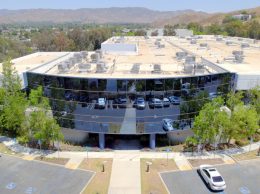Transportation future up to Ventura County voters
IN THIS ARTICLE
- Editorials Topic
- Editorial board and Henry Dubroff Author
By Editorial board and Henry Dubroff Friday, July 1st, 2016
Ventura County has a once-in-a-generation opportunity to take control of its future.
Going before voters in November is a Transportation Investment and Expenditure Plan that would for the first time give Ventura County a dedicated sales tax revenue stream for transportation upgrades and environmental improvements.
The plan, crafted by the Ventura County Transportation Commission, was certified for the ballot with overwhelming support of the Ventura County Board of Supervisors. It has garnered support from a majority of the cities and has strong appeal with a range of voters.
Thanks to the leadership of VCTC Executive Director Darren Kettle, this year’s proposal is far ahead of a 2004 effort that fell short of the mark for consensus-building. Some highlights:
• A full lane widening of Highway 101 from the Los Angeles County line to Route 33 in Ventura and improvements to Route 118 in Moorpark and Simi Valley.
• Investments in Metrolink rail service and more flexible bus service for commuters.
• Improved highway access to the Port of Hueneme and Naval Base Ventura County.
• Improved environmental protection from highway runoff and bicycle and pedestrian improvements.
Passage of the tax measure would put Ventura County in the same league as Los Angeles and Santa Barbara counties, which have similar funding measures. If a transportation ballot measure passes in San Luis Obispo County, the entire region would be on the same page.
We don’t endorse taxes lightly and this particular measure would place a large burden on working families. But there’s just too much congestion on our roads and too much demand for transportation to do nothing.
We’re pleased to be an early supporter of Ventura County’s Transportation Investment and Expenditure Plan.
Diablo Canyon closure on track
Suddenly, there is a lot of momentum behind PG&E’s abrupt decision to stop operating the Diablo Canyon nuclear plant when its license fully expires in 2025.
On June 28, the state Lands Commission voted unanimously to extend leases to allow the plant to draw and discharge water into the Pacific until the 2025 closure.
That followed a June 27 announcement that Gov. Jerry Brown and legislative leaders have agreed to a series of reforms at the California Public Utilities Commission to provide for greater transparency and citizen involvement in its decision-making process.
Among the reforms involving public safety is a requirement for the CPUC to work with the federal Nuclear Regulatory Commission to find a way to remove the spent fuel from its current storage site adjacent to the San Luis Obispo County facility to “an independent spent fuel storage installation.”
The bottom line is that the newly revamped CPUC will be a major stakeholder in the future of Diablo Canyon. We expect that will mean a strong voice for the Central Coast region as the future of the plant, the decommissioning process, our energy infrastructure and the economic impact of the plant’s closure come before the CPUC.











